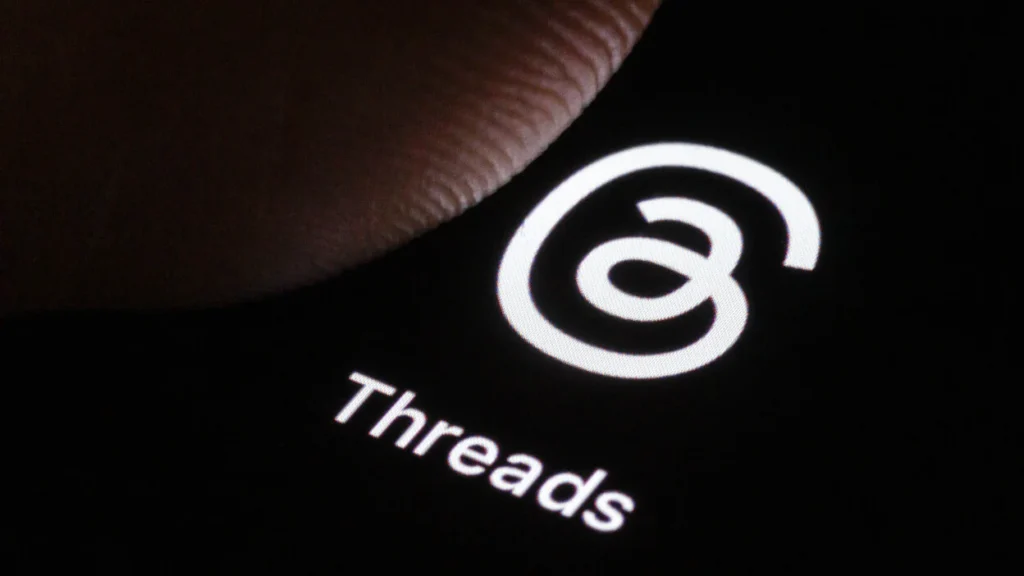Remember when you could slap any trending hashtag on your TikTok video and watch the views roll in? Those days are long gone. TikTok’s algorithm has gotten smarter, and so have the creators who consistently go viral.
The difference between creators who struggle to reach 1,000 views and those hitting hundreds of thousands isn’t luck or fancy equipment. It’s a strategy, specifically, in how they approach hashtags. While most people are still throwing spaghetti at the wall, successful creators have figured out the formula.
This guide will teach you everything you need to know about TikTok hashtags in 2025. We’ll cover how the algorithm really works, which strategies move the needle, and how to measure what’s working so you can keep improving.
How TikTok’s algorithm processes your hashtags
Let’s start with what’s really happening when you hit “post” on your TikTok video. The platform’s recommendation system has become incredibly sophisticated, and hashtags play a bigger role than most people realize.
According to TikTok’s Creator Portal, hashtags serve as contextual signals that help the algorithm understand what your content is about and who might want to see it. Think of them as instructions you’re giving to TikTok’s AI.
Here’s how it works: When you publish a video, TikTok shows it to a small test audience first, usually a few hundred to a couple thousand people. Your hashtag choices directly influence who gets included in that test group. Use fitness hashtags, and your video goes to people who regularly watch workout content. Choose comedy tags, and it reaches audiences looking for laughs.
The algorithm watches how this initial audience responds. Do they watch the whole video? Do they like, comment, or share? If your test audience engages well, TikTok gradually expands your reach to similar users. If they scroll past quickly, your video gets buried.
The key insight that most creators miss is this: hashtag relevance matters more than hashtag popularity. A video tagged with relevant but smaller hashtags often outperforms content using massive, generic tags because it reaches genuinely interested viewers rather than passive scrollers.
TikTok’s machine learning has also improved at detecting when hashtags don’t match the content. Using trending tags that have nothing to do with your video might get you in front of more people initially. Still, if they immediately scroll away, the algorithm learns that your content isn’t valuable and limits future distribution.
The strategic framework that works
The most successful creators in 2025 use what we call the pyramid approach to hashtag selection. Instead of randomly picking tags or using only trending ones, they create a strategic mix that serves different purposes.
Think of it like this: 60-70% of your hashtags should be precise to your niche. These might only have thousands or tens of thousands of posts, but they connect you with people who are genuinely passionate about your topic. If you make budget travel content, tags like “backpackerlife” or “budgettraveltips” work better than the oversaturated “travel.”
The middle 20-30% should be moderately popular hashtags, ones with hundreds of thousands to low millions of posts. These help expand your reach to related audiences without getting lost in the competition. For the travel example, this might include “solotravel” or “wanderlust.”
The top 10-20% can include trending or very popular hashtags, but only if they’re relevant to your content. These give you a shot at massive reach if your content resonates with broader audiences.
This approach is practical because it mimics TikTok’s content distribution strategy. Your niche hashtags ensure you reach people who care about your specific topic. Your moderate hashtags expand that reach to related communities. And your trending hashtags provide lottery ticket potential for viral success.
Research from Sprout Social’s 2024 Index backs this up, showing that smaller, more specific hashtags often generate higher engagement rates than popular generic alternatives.
Why timing still matters more than you think
One of the biggest myths about TikTok is that good content will always find its audience eventually. That’s not quite true, especially when it comes to trending hashtags.
The window for capitalizing on trends has gotten incredibly short. Later’s 2024 TikTok Marketing Report found that content posted within the first few hours of a trend’s emergence has a dramatically higher chance of broad reach compared to content posted after the trend becomes established.
Here’s the reality: when a new trend starts, TikTok actively promotes related content to test whether it has viral potential. But this promotional boost only lasts a few hours. Miss that window, and you’re competing with thousands of similar videos for scraps.
The most successful creators check TikTok’s Discover page every morning between 8:00 and 10:00 a.m. EST, when new trends often emerge. Some set up Google Alerts for their niche keywords plus “TikTok” to catch emerging opportunities before they explode.
But timing isn’t just about trends. Your specific audience has daily patterns, too. Food creators often see peak performance during meal planning hours, 6 to 8 a.m. and 4 to 6 p.m., when people are thinking about what to cook. Fitness content tends to perform best during traditional workout windows.
The key is understanding when your audience is most likely to engage with your type of content, then timing your posts accordingly.
Content quality beats hashtag tricks every time
Let’s be honest about something that might hurt to hear: no hashtag strategy can save bad content. TikTok’s algorithm has gotten sophisticated enough to recognize when audiences aren’t genuinely engaging, and it responds by limiting distribution regardless of your hashtag game.
The platform’s Creator Fund Guidelines make it clear that successful content typically maintains high completion rates, generates meaningful engagement, and provides genuine value to viewers.
Here’s what TikTok measures: How long do people watch your video? Do they like, comment, or share? Do they visit your profile or follow you after watching? These engagement signals matter far more than which hashtags you use.
This means your priority should always be creating content that serves your audience. Does your video deliver on what the caption promises? Are the first three seconds compelling enough to stop the scroll? Is the audio crisp and the message clear?
The most successful creators treat hashtags as amplification tools for already great content, not as substitutes for value. They spend 80% of their energy creating videos worth watching and 20% ensuring those videos reach the right people.
Learning from real success stories
Sometimes, the best way to understand hashtag strategy is to examine what has worked. Take Chipotle’s ChipotleIRL campaign, which generated billions of views in 2024.
The campaign succeeded because it followed principles any creator can apply. First, they made participation simple; customers just shared genuine restaurant experiences. Second, they focused on authentic content rather than scripted promotion. Third, they encouraged user-generated content while maintaining a clear brand association.
According to TikTok’s newsroom coverage, the key was building initial momentum through strategic creator partnerships, then letting organic user participation drive the campaign’s growth.
Individual creators can apply these lessons. Make your hashtag strategy focus on positive value creation. Keep participation easy and rewarding for your audience. Maintain consistency between what your hashtags promise and what your content delivers.
Contrast this with campaigns that require complex participation, focus primarily on competitor bashing, or promise experiences they can’t deliver. These typically struggle to gain traction and often generate negative sentiment.
Research your competition (the right way)
The most innovative creators don’t develop hashtag strategies in isolation. They systematically study their competition to identify opportunities and patterns before hashtags become oversaturated.
Here’s how to do competitive research effectively: identify five to 10 successful accounts in your niche with follower counts between 50,000 and 500,000. They’re big enough to have proven strategies but small enough that you can still analyze individual post performance.
Examine their last 30 posts and document the hashtag patterns. Which tags appear frequently across multiple accounts? Which hashtags seem to generate disproportionately high engagement? When do they experiment with new hashtags?
The goal isn’t to copy their strategies directly. Instead, you want to understand the hashtag ecosystem in your niche well enough to identify gaps and opportunities.
Social Blade can help you track competitor growth patterns, while simple spreadsheets work fine for documenting hashtag usage patterns.
Please pay special attention to when successful creators test new hashtags on lower-stakes content before incorporating them into major posts. This testing phase often signals emerging opportunities before they appear in trending lists.
Measuring what matters
Most creators obsess over total view counts while ignoring the metrics that predict long-term success. Understanding which hashtags drive meaningful results requires looking beyond surface numbers.
TikTok Pro Analytics provides hashtag-specific data that most creators never explore. You can see audience retention rates broken down by traffic source, demographic information about viewers who find your content through specific hashtags, and engagement patterns that reveal which tags attract your most valuable audience segments.
The most revealing metric is often audience retention by hashtag source. If viewers discovering your content through “homeworkout” watch 80% of your video, while those finding you through “fitness” drop off after 30%, your niche hashtags are attracting significantly more engaged audiences.
Engagement velocity during the first hour provides another crucial indicator. Content generating 15 or more comments per 1,000 views typically receives algorithmic promotion, while content struggling to reach five comments per 1,000 views faces distribution limitations.
According to Influencer Marketing Hub’s TikTok Engagement Benchmarks, performance standards vary by account size:
- Under 10,000 followers: target 8% or higher engagement for excellent performance
- 10,000 to 100,000 followers: aim for 6% or higher engagement for strong performance
- Over 100,000 followers: target 4% or higher engagement for good performance
Track follower conversion rates, too. Calculate the new followers gained divided by the total reach. Hashtags driving 2% to 5% follower conversion rates for smaller accounts typically indicate strong audience targeting.
Mistakes that kill your reach
Even creators who understand hashtag strategy often make subtle mistakes that dramatically reduce their content’s potential. Here are the big ones to avoid:
Using oversaturated hashtags. When popular hashtags have millions of posts, newer content gets buried quickly. Focus on hashtags with 100,000 to 1 million posts for the optimal balance of reach and competition.
Hashtag spam. TikTok’s Community Guidelines specifically prohibit using irrelevant hashtags to chase views. The algorithm has gotten better at detecting this and responds with reach limitations.
Applying Instagram strategies to TikTok. The platforms work differently. Buffer’s platform comparison research shows TikTok typically performs better with three to five relevant hashtags rather than Instagram’s 20-30 tag approach.
Seasonal misalignment. Using summer hashtags in December or holiday content in March confuses both algorithms and audiences, reducing relevance and engagement potential.
Ignoring negative hashtag associations. Hashtags can become linked to controversial content quickly. Monitor your primary hashtags to ensure they haven’t become associated with problematic trends.
If you notice sudden drops in reach, comments questioning your hashtag choices, or content getting stuck at unusually low view counts, you might be dealing with algorithmic penalties. The recovery protocol involves stopping all posting for 24 to 48 hours, auditing recent hashtag usage, and creating new content with only highly relevant hashtags until performance recovers.
Planning for seasons and cultural moments
Strategic creators plan their hashtag strategies around cultural moments and seasonal interests rather than just reacting to trends after they peak. This proactive approach positions your content to meet audience interests precisely when they’re most receptive.
The key is understanding when people start thinking about seasonal activities rather than when those activities occur. Back-to-school hashtags become relevant in July when parents start shopping, not in September when school starts. Holiday shopping hashtags gain traction in October, not December, when people have already made their decisions.
Google Trends helps identify these patterns by showing when search interest builds for different topics throughout the year. Food creators might start incorporating “holidaybaking” hashtags in October when people begin planning holiday entertaining, not in December when competition peaks.
Maintain core niche hashtags year-round while rotating seasonal elements based on cultural calendar events. Document which seasonal hashtags drive the strongest engagement for your content type, and when audience interest begins building for different topics.
This systematic approach transforms hashtag strategy from reactive trend-chasing into proactive audience service.
Your 30-Day implementation plan
Alright, here’s the exact 30-day system I use to transform hashtag approaches from random selection to strategic optimization. This isn’t about overnight changes; it’s about building sustainable habits while testing what works for your specific audience.
Week 1: foundation building
Start by auditing your last 20 posts using TikTok Pro Analytics to establish baseline performance metrics. Then identify five successful creators in your niche and analyze their hashtag patterns over their last 30 posts. Next, create your initial hashtag bank following the pyramid approach. Finally, test these combinations on three pieces of content, documenting performance after 48 hours.
Week 2: systematic testing
Implement controlled testing by varying only one hashtag element per post. Monitor TikTok’s Discover page daily for emerging trends and set up Google Alerts for your niche keywords plus “TikTok.” Document which content types and posting times generate the strongest performance.
Week 3: data-driven optimization
Analyze performance data from your testing period to identify top-performing combinations. Double down on successful hashtag combinations while eliminating underperforming tags. Expand testing to different content formats and optimal posting windows, then start tracking engagement velocity and audience retention patterns.
Week 4: sustainable systems
Create monthly hashtag research schedules that don’t require daily management. Develop hashtag banks for different content types and seasons. Plan seasonal hashtag transitions 3 months in advance and establish competitor monitoring routines using the techniques I outlined.
The goal isn’t perfection, it’s consistent improvement through systematic testing and optimization.
What’s coming next: algorithm changes to watch
TikTok’s platform evolution continues accelerating, and I’ve been tracking beta features and algorithm updates that will reshape hashtag strategies. Understanding these changes early can provide a competitive advantage.
AI-powered hashtag suggestion improvements: TikTok is testing more sophisticated hashtag recommendation tools that analyze your video content and suggest relevant tags automatically. This could reduce manual research time while making hashtag gaming tactics less effective.
Voice search integration expansion As users increasingly speak search queries rather than type them, hashtags may evolve toward natural language phrases that match spoken patterns. Testing hashtags like “#howtomakepizza” instead of “#pizzarecipe” might provide early advantages.
Cross-platform algorithm convergence. New platforms and existing ones are borrowing successful recommendation techniques from each other. Understanding fundamental hashtag principles, audience targeting, competitive analysis, and performance measurement remains valuable regardless of technical changes.
Privacy Regulations are affecting social media analytics capabilities. Building direct audience relationships through email lists and community platforms becomes increasingly valuable for gathering hashtag insights independent of platform restrictions.
My adaptation strategy: Focus on building authentic communities around valuable content, utilizing hashtags as connection tools rather than relying on growth hacking techniques. This approach provides stability through platform changes while maintaining effectiveness in dynamic environments.
The creators who thrive in the long term genuinely serve their audiences, utilizing strategic hashtag optimization to ensure that valuable content reaches the people who need it most.
Social media algorithms evolve continuously. While these strategies reflect current best practices, always test approaches with your specific audience and stay updated on platform changes through official TikTok creator resources.





